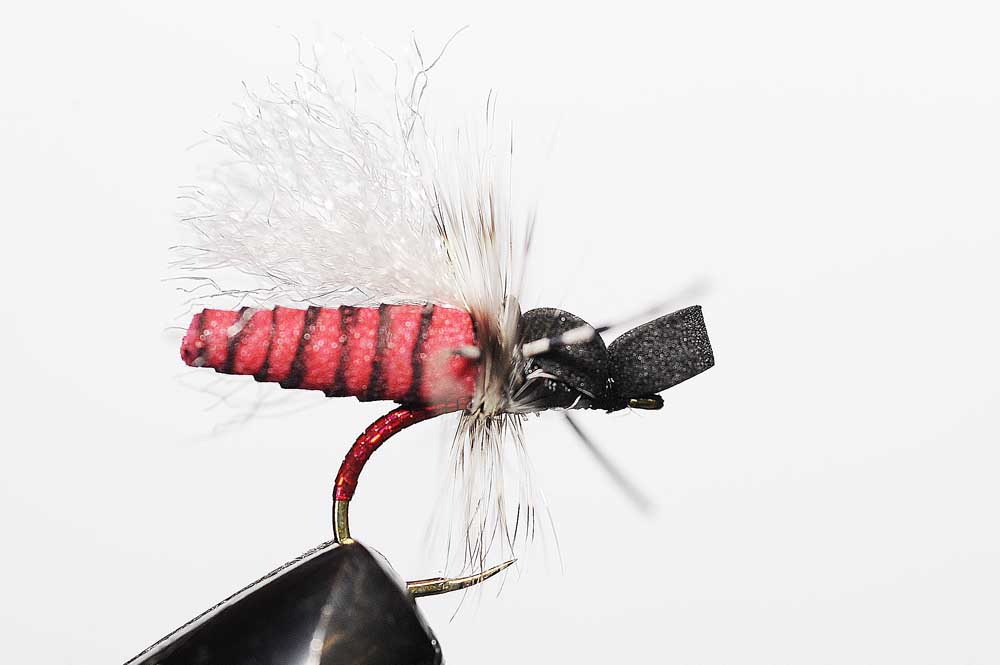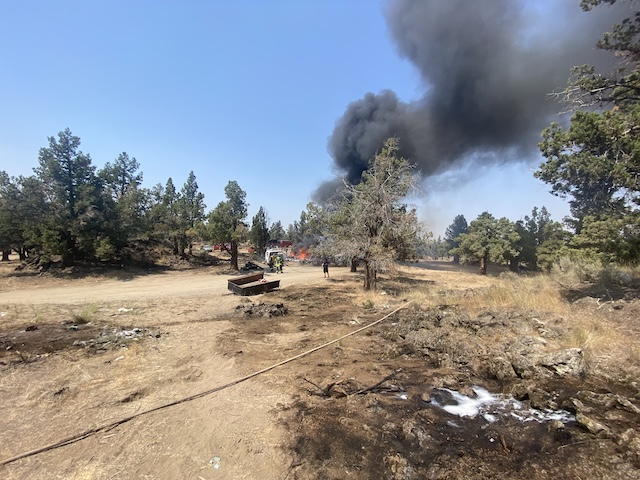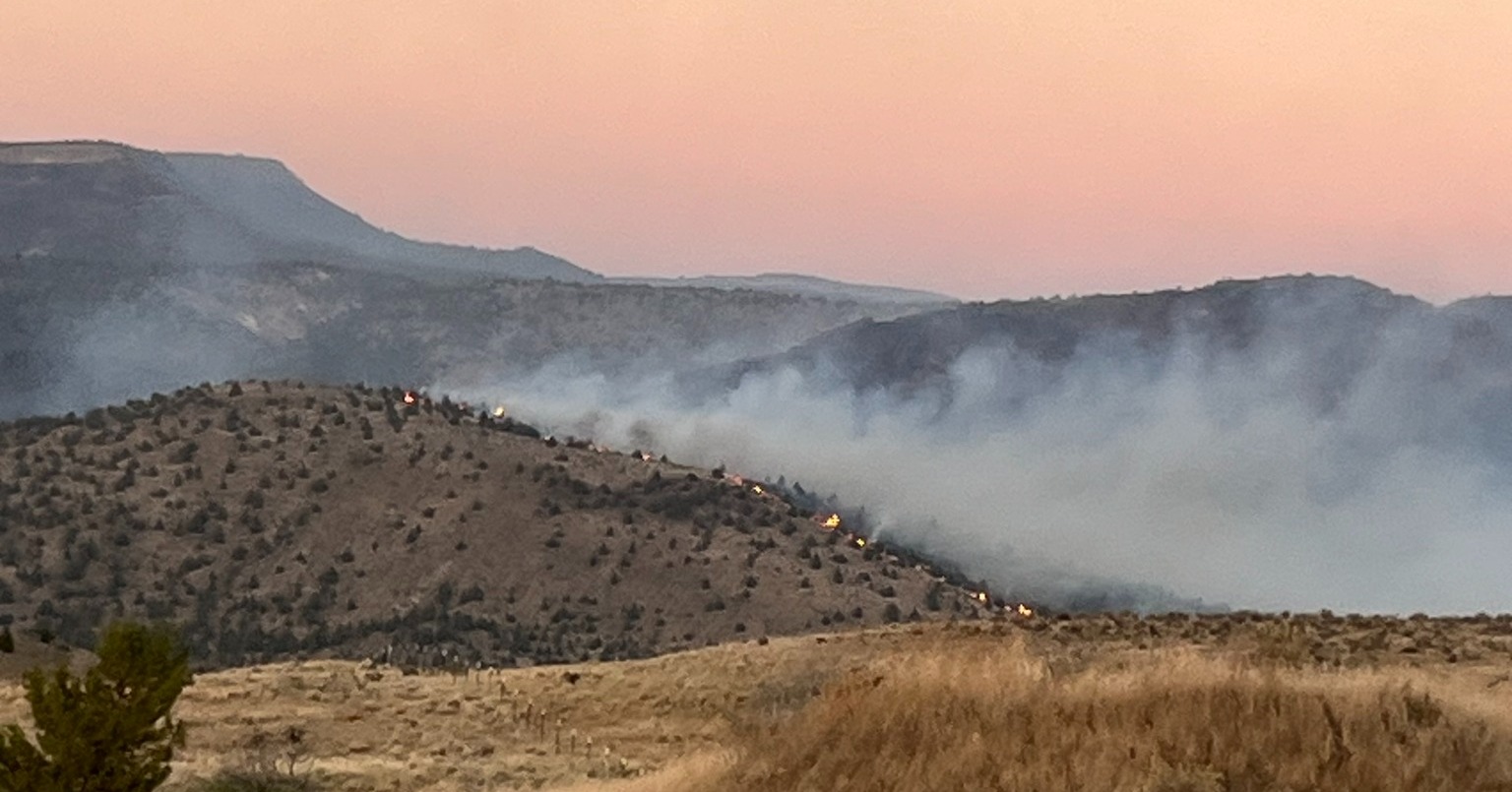Outdoors: Thru-hiking for mountain trout
Published 5:15 pm Monday, July 4, 2022

- Daniel's Hegan Ant, black/red, courtesy Rainy's Flies.
At the end of the road is a lake. Walk the trail west to the outlet and the track continues from there — to another lake and another lake and another and back to the trailhead. Hike fast and try to fish several still waters before dark or take it slow and fish two a day.
Lilypad Lake, Windy Lake, Senoj, Farrell and Meek. Most people who live in Central Oregon have never even heard their names, much less seen them. There are hundreds more. Many lakes a mile or more from the nearest road are not even fished every year. Our mountains contain a wealth of lakes that can make two anglers seem like a crowd. I have friends that intentionally hide the names of their favorites even from their best friends.
Trending
A few years ago, a guy called with an unusual request. Sam was from California and his son, Taj, turning 13 that summer, wanted to hike for trout for 10 days. Sam asked if I would lay out a few two- and three-day loop hikes for them.
I flipped to the back of the “Fishing Central Oregon” book, to the white pages where people seldom think to turn and the little known backcountry lakes.
Up near Mount Jefferson, on the Warm Springs Indian Reservation, a string of small lakes are accessible to non-tribal members with the proper permit. In the shadow of Diamond Peak a couple of chains of small still waters can be found near Crescent Lake and more near Odell Lake. Up by Lava Lake and Cultus several trailheads lead up and away. The Olallie Lake area is loaded with waters full of trout. Lay out a map, find a place to park and plot a hike that will lead from one lake to the next to the next.
The backcountry Cascades lakes are seeded by helicopter or pack train every other year. Most are stocked with fingerlings — brookies, cutthroats and rainbows — and the fish that survive winter can be frying-size by the next July.
I provided four printed routes, sent them by mail and when I returned from my trip, I heard Sam and Taj were getting out of the woods and wanted to meet up for coffee.
Taj had the time of his life. The father and son duo spent their whole vacation in the woods, sleeping under the stars, fishing mornings and evenings, hiking when the sun was up, cooking freeze-dried dinners and slapping mosquitoes. I was proud of them.
Trending
Up in the mountains, the trout are uncomplicated. The trails are easy to follow and the packs don’t have to be heavy. Routes can vary according to skill level and time.
After a little research on the web, I came to the conclusion that the old ways are better than the new ways. Use Google Earth if necessary, but buy a real map, get a real compass. A GPS unit is optional, but adds flexibility in finding unfished water.
Get a hiking book. There is a higher level of trust in the old hiking books that can be found in new and used bookstores. And the U.S. Forest Service maintains lists of the lakes and the fish available. Don’t trust what people on the internet say about the lakes they have been to.
Compare information from different sources and take notes. Heed the author’s advice about weather and what to bring and what to leave behind.
Once the route is settled on, share the plan with two different people at home. If fishermen don’t return at the appointed time, rescuers can know where to start a search.
Plan to bring a light spinning rod with 4-pound test line and casting bubbles and wet and dry flies. A good alternate would be a 9-foot, 4-weight fly rod with a floating line. Pack them both.
Stuff a sleeping bag and pad in the backpack. Don’t forget mosquito repellent.
For shorter trips, plan no-cook meals. Pack a stove and freeze-dried meals for overnighters. Dress in layers. Keep a change of clothes because thunderstorms and rain or snow can whip up in minutes no matter what the forecast says.
Later, Sam reflected on the trip and how they had fished several routes in 10 days in Central Oregon.
“We got to see so much. To break it up in three or four different trips allowed us to evaluate our gear and know what to leave behind on the next route.”
They used the float-and-fly method of fishing with a spinning rod. And they used global positioning. Taj’s best trout of the trip stretched the tape to more than 20 inches.
With the map in front of them, the pair found a lake they could hike to by using GPS and cutting straight across a swamp — a spectacular place off the beaten track with a feeding trout.
“That was one of our first experiences doing off-trail hiking,” Sam said. “And using GPS, which was how we got to that lake, and where Taj caught that monster fish.”
Tie or buy Daniel’s Hegan Ant against those blessed days when large clouds of winged ants are blown on mountain winds.
Consider an alpine lake, surrounded by fire-killed timber. These places are home to ants, and when populations get too big, a batch of winged adults are going to flutter off to colonize new territory. Some of those bugs are going to end up in the bellies of trout.
The only perspective that matters is the way the trout sees it, through a glass darkly, against a cloudy sky. The Hegan Ant is tied with spiraled foam, which tends to make it ride higher on the water. This and the tall poly wing make it easy to watch as it bobs in riffled water.
The tail is constructed of red or black spiraled foam. The head and body are sculpted foam. Barred legs keep the fly stable and a poly wing and grizzly hackle complete the illusion.
—Gary Lewis, for The Bulletin








